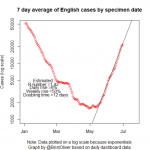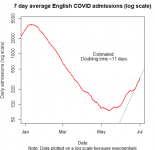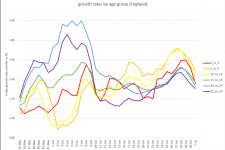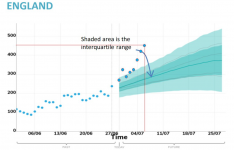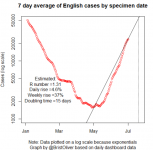Possibly. However, we must remember that the rate of increase over the past few weeks has been eye wateringly high and the average daily increase over the past 7 days is still at 4.5%. That suggests a doubling rate of roughly every two weeks, even if the rate of increase has slowed slightly.
Also, the flip side is that the rate of increase in the 7-day average for reported deaths has been accelerating for the past five days. Now, if you believe that this metric is more important than the number of cases, that is certainly pause for thought.
Johnsons ridiculous answers in PMQ's didn't help much. If the figures he was giving were even remotely accurate we are all screwed.. He mentioned that vaccinations are 90% effective in stopping hospitalizations. On face value that means that with 100,000 infections a day, 10,000 will be hospitalised. I think what he meant, or at least I hope, is that only 10% of people previously hospitalised, will be hospitalised if they have had the vaccine.
The real numbers at the moment are about 2 per 100,000 of population (end of june) from a high at the beginning of the year of just under 40 per 100,000. Even allowing for lower infection rates at the moment that is a huge drop off.
there are 2 worrying factors. If infection rates continue to increase, hospital stays will increase also, albeit at a much lower rate per infected. If the infections go up enough, hospitals become overwhelmed. The second thing that is a worry is the cost to people being asked to isolate without an adequate support package.
100,000 infections a day is a lot of contacts that will be required to isolate. This reduces the workforce and applies financial pressure to those families, if indeed they do isolate.
The rate of increase of new infections is starting to slow, but we are still going to end up with a very high, high.
The government have essentially gambled that infections will start to reduce before hospitals become overwhelmed, but once again Johnson doesn't really care about those who die as a result of his ridiculous roadmap and timescales.

